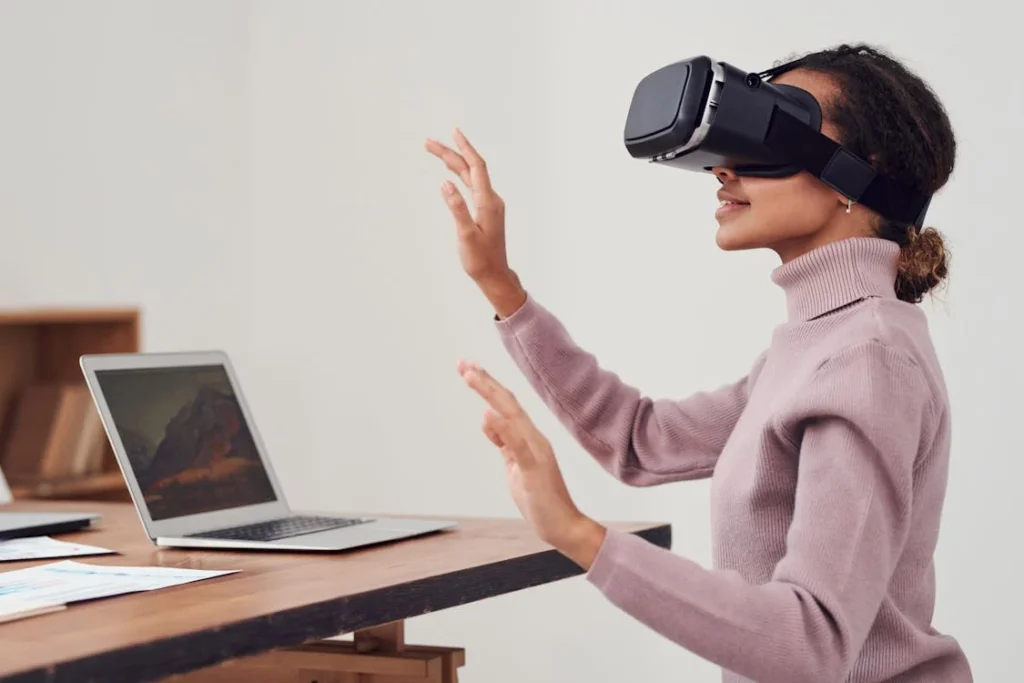Rehabilitation is about more than exercises and progress charts. It’s about people—people going through change, recovery, and often, emotional struggle. For them, a rehab app isn’t just a tool. It’s a companion. It keeps them company on hard days, encourages them through discomfort, and celebrates them during small wins. But for that to happen, the app must be designed with real care. Not just functional care, but emotional care. That’s where great UX (user experience) design comes in.
Too often, rehab apps are built like checklists—cold, rigid, and filled with medical jargon. They may have the right features, but they miss the heart. The best apps go deeper. They feel easy, inviting, and safe. They guide without pushing. They respect the user’s time, energy, and emotion. And they do it all without needing a tutorial.
At Robobionics, we work at the intersection of technology and healing. We believe that design can either slow down recovery—or speed it up by making every tap feel natural and every screen feel human. Let’s explore what it truly takes to build a rehab app that not only works—but is loved by the people who use it.

Designing for Emotion First: The Foundation of Rehab UX
Why Empathy Matters More Than Features
When someone uses a rehab app, they’re not always feeling their best. They might be tired. They could be in pain. They might be recovering from surgery, injury, or even adjusting to a new prosthetic limb. In that moment, they don’t need a complicated interface. They don’t want a lecture. They want clarity, comfort, and control. That’s why great user experience for rehab apps starts with empathy.
This means stepping into the user’s shoes—not just their goals, but their emotions. What are they feeling when they open the app for the first time? What about on a difficult day, when progress feels slow? Or on a good day, when they want to see how far they’ve come? A thoughtful UX designer thinks about all these moments and builds for them with care.
An empathetic rehab app doesn’t bombard the user with options. It gently asks how they’re doing. It offers a session that feels manageable. It gives them a clear path without pressure. If they miss a day, it doesn’t scold. It encourages. This tone is built into every element—from the words on the buttons to the way progress is displayed. It’s not about sugar-coating. It’s about respecting the emotional load that rehab already carries.
Frictionless First Impressions
The first time a user opens a rehab app is a critical moment. If the design is too confusing or too crowded, they’ll feel overwhelmed. If the flow is too slow or filled with unnecessary steps, they’ll lose trust. First impressions in UX are not just visual—they’re emotional. A patient should feel like the app gets them from the first screen.
This starts with a clear onboarding experience. Not a long tutorial, but a few helpful nudges. “Welcome back,” or “How are you feeling today?” These messages feel personal without being invasive. If a patient is new to therapy, the app might gently introduce a beginner session. If they’re returning after a long break, it might ask if they want to ease back in. All of this should happen with minimal typing, no clutter, and a calm, warm visual design.
The app should not feel like software. It should feel like a guide—reliable, understanding, and always ready.
Keeping the Interface Calm and Predictable
Rehab users are not sitting on a couch with full attention. They might be standing. They might be moving slowly. Some could be using one hand, or may have cognitive fatigue from long sessions. This means the design must do a lot—with very little effort from the user.
Calm design is the key. No flashing colors. No aggressive sounds. Use soft contrast, spacious layouts, and large touch areas. Everything on the screen should have purpose. No tiny buttons. No small fonts. Avoid medical language unless it’s necessary. Let icons support understanding, but don’t replace plain words with visuals that need guesswork.
Predictability also builds comfort. The layout should remain consistent screen to screen. If users swipe right to skip a task on one page, the same gesture should work on others. This reduces decision fatigue and allows the user to focus on recovery, not figuring out how the app works.
If a task requires effort—like a movement test or a daily report—the effort should go into the task itself, not navigating to it.
Microcopy That Feels Like a Human Voice
Words on a screen can make a big difference—especially in a rehab context. The microcopy (the tiny pieces of text that guide users) shouldn’t sound like it’s from a hospital chart. It should sound like someone who cares. But it shouldn’t be overly cheerful either.
There’s a delicate balance in tone: kind but honest, motivating but realistic.
Instead of saying “Goal not achieved,” the app might say “Let’s try again tomorrow—you’re getting there.” Instead of “Session completed,” it could say “Nice work—that was one more step forward.” These may seem small, but they shape how the user feels after every session. And that feeling will determine whether they come back tomorrow.
Even error messages matter. If something goes wrong, say what happened clearly—but gently. “We couldn’t load your next session. Want to try again in a moment?” feels far more respectful than “Error 503.”
Every word should pass a simple test: Would I say this to a friend who’s going through a tough time?
Visual Feedback That Builds Confidence
Rehab progress is often invisible. A patient may be improving slowly, but not feel it. That’s why visual feedback in a rehab app is so important. It bridges the gap between effort and evidence. When a user completes a movement, a small check mark, a glow, or a sound can make that effort feel real.
But it must be done with care.
Too much feedback feels like noise. Too little feels empty. The sweet spot is subtle reinforcement. A progress ring that fills over time. A streak counter that resets gently if missed. A tracker that celebrates improvement, not just perfection.
This feedback builds confidence, not comparison. The goal is not to compete, but to feel capable. Rehab is already stressful. The app should never make someone feel like they’re failing. Every part of the visual experience should highlight how far the user has come—not how far they have to go.
The best apps don’t just track steps. They track spirit.
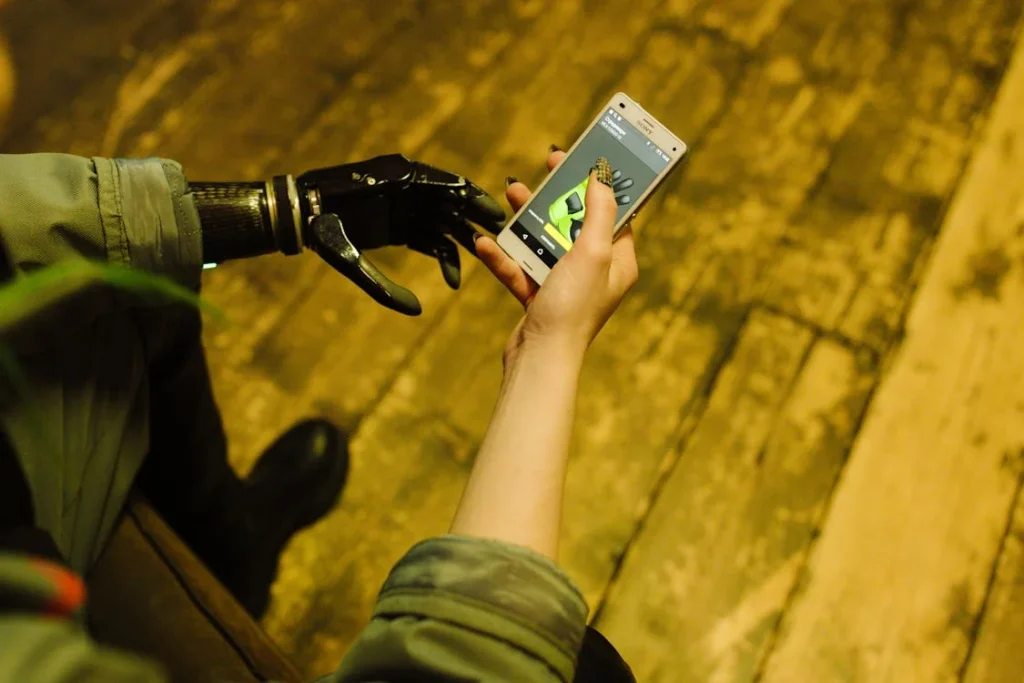
Crafting Personalized Journeys That Feel Like They Belong to the User
Why One Experience Doesn’t Fit All
Every patient’s rehab journey is different. Some are recovering from surgery. Others are adjusting to prosthetics for the first time. Some are children. Others are older adults. Each person brings a different body, mindset, and emotional rhythm. That’s why a good rehab app shouldn’t offer a single path—it should adjust itself to feel as personal as possible.
Personalization in UX doesn’t have to be fancy. It doesn’t need flashy dashboards or complex AI. It starts with a simple question: “How are you today?” This tiny prompt gives users permission to choose their pace. If they’re tired, the app can suggest a lighter session. If they feel strong, it can offer a challenge. These choices build autonomy, and autonomy feeds engagement.
When users feel in control, they’re more likely to come back. They’re more likely to trust the app. And they’re more likely to feel that it’s designed for them—not just for someone like them.
This subtle shift—from being told what to do, to being gently guided—creates a user experience that feels like a partnership, not a prescription.
Designing for Different Moods and Energy Levels
Recovery doesn’t follow a straight line. Some days feel good. Others feel heavy. One morning a patient might be motivated and ready to move, and the next they might be sore, anxious, or emotionally drained. A rehab app that ignores these shifts risks pushing users away. But one that respects them can become a source of comfort, even on hard days.
That’s why mood-responsive design is such a powerful UX principle. It can be as simple as offering two session types: “Ready to Push” and “Taking It Slow.” It can mean letting users skip a session without guilt. Or letting them switch between voice-guided sessions and silent ones, depending on what they need that day.
Small details—like the color tone of the interface, the pacing of instructions, or the way encouragement is delivered—can all change based on user input. This makes the app feel emotionally aware, even if it isn’t technically intelligent.
By designing around the ebb and flow of human energy, we stop treating patients like machines. We treat them like people. And that kind of care builds long-term trust.
Celebrating Small Wins Without Overwhelming the User
One of the toughest parts of recovery is that progress feels slow. The body is healing, but sometimes the brain can’t feel it. If a patient only sees their big milestones—like a monthly goal or a total completion—they might lose sight of how much they’re actually doing every day.
Great UX design solves this by celebrating the smallest wins—but doing so without being loud or pushy.
Let’s say a user completes a stretch that once caused pain. A gentle “Nice job—that looked smoother today” is more powerful than a flashy badge. If they show up after missing two sessions, a quiet “Welcome back—we missed you” goes further than a blinking alert. This kind of emotional language is subtle, respectful, and rooted in human rhythm, not app logic.
These moments of soft praise activate the brain’s reward systems, which makes users more likely to return. But they also do something deeper: they rebuild confidence. A user who feels like they’re moving forward—no matter how slowly—is a user who will keep going.
That’s the whole point of rehab design: to create forward motion that feels possible.
Creating a Space That Feels Private, Safe, and Encouraging
Many rehab patients—especially those adjusting to new mobility—deal with vulnerability. They may feel self-conscious about their body. They may be in emotional pain, grieving a loss or change. A rehab app, even though it lives on a phone, becomes a private space where they meet themselves every day. That space must feel safe.
This starts with privacy by design. The user’s journey, data, and history should be stored securely and presented gently. Don’t plaster graphs or numbers all over the screen. Let users control what they see, and how. A minimalist design, with one clear action at a time, allows the interface to breathe and puts the user at ease.
Supportive language also matters. Avoid harsh words like “failed,” “incomplete,” or “not done.” Instead, offer prompts like “Want to pick up where you left off?” or “Ready when you are.” These aren’t just design choices. They’re emotional choices. They say: “We’re here, and we’re not judging.”
When users feel emotionally safe, they’re more willing to push through physical discomfort. They’re more open to being honest with themselves. And they’re more likely to make the app a part of their daily routine—not out of obligation, but because it feels good to return to it.
Making the App Feel Alive, Not Static
Static apps get stale fast. If nothing changes—no new messages, no visual shifts, no evolving story—users begin to tune out. The best rehab apps feel alive, even in small ways. They greet the user by name. They show changing visuals depending on time of day or season. They surprise the user with a new quote or encouragement once in a while.
These micro-moments are not about entertainment. They’re about freshness. They show the user that the app is paying attention. That it’s a space in motion, just like they are. And that creates emotional engagement.
At Robobionics, we often talk about building not just devices or systems, but relationships. When a user feels connected to a product, they begin to value it. They begin to let it into their life in ways that a functional tool never could.
A rehab app with great UX doesn’t just show up. It shows up for you—and that’s what makes it unforgettable.
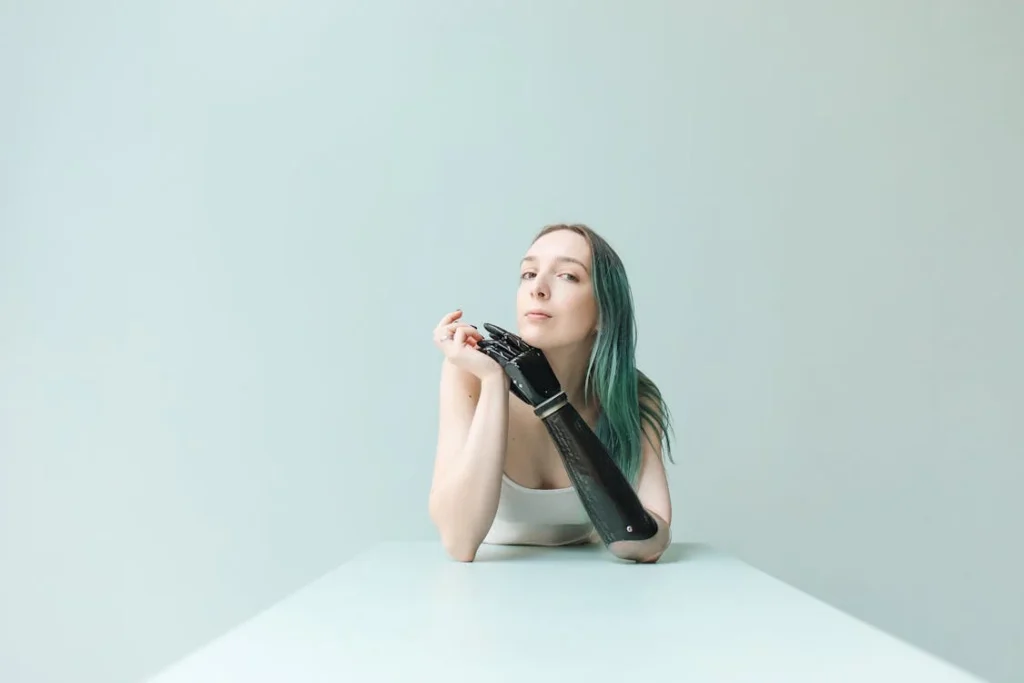
Building Accessible Experiences That Everyone Can Use
Why Accessibility Isn’t Optional in Rehab App UX
Rehab apps are used by people recovering from serious physical or neurological events—amputations, injuries, surgeries, or long-term conditions. Some users may have limited mobility, reduced vision, hand tremors, speech impairments, or even cognitive challenges. That’s why accessibility isn’t a “nice-to-have”—it’s an absolute requirement. If a rehab app isn’t accessible, it’s excluding the very people it’s supposed to help.
Accessible UX doesn’t mean adding a few toggles at the end. It starts at the core of the design. The buttons need to be large enough for someone with fine motor difficulties. The text must be readable for those with vision strain. The layout must be simple enough for users with slower processing speeds. Every tap, every swipe, every screen must be designed with the assumption that the user may have temporary or permanent limitations.
And it’s not about lowering expectations. It’s about removing friction. If the patient can’t reach a button, or doesn’t understand what to do next, or can’t see what’s on the screen, the recovery journey becomes harder than it already is. That’s not just bad UX—it’s harmful.
At Robobionics, we often say: a product that works for the most vulnerable users works best for everyone.
Designing with Physical Limitations in Mind
Many rehab users—especially prosthetic wearers—operate their devices with altered hand function. Some may have just one functioning arm. Others may be learning to use a bionic hand that’s still unfamiliar. In either case, the app should never ask more than what’s physically comfortable.
Buttons must be easy to reach with either hand. Elements shouldn’t require pinching or complex gestures. Drag-and-drop may be tempting, but can frustrate someone with limited grip strength. Instead, tap-based interactions work better. Long-press actions should be optional, not required.
The screen shouldn’t be too busy. If there are ten different icons, the user won’t know where to tap. If they need to scroll sideways and vertically to finish a session, they may give up halfway through. Interfaces should offer generous spacing and no double taps unless absolutely necessary.
Also, avoid timers that disappear too quickly. Some people with new prosthetics or cognitive delays need time to respond. Rushing them doesn’t speed recovery. It builds stress. A rehab app should allow users to move at their own pace—slow or fast—without judgment.
Visual Design That Reduces Strain and Encourages Focus
Vision is another major factor in accessibility. Post-surgery medications, age, or fatigue can affect how people see the screen. Designers need to build with readability, clarity, and contrast in mind.
Start with font size. Tiny fonts may look modern, but they are terrible for patients who are tired or visually impaired. A readable base font—minimum 16px or higher—is non-negotiable. Give users the ability to enlarge text or switch to a high-contrast mode.
Color choice matters, too. Red and green may look nice together, but many users are color blind. Relying only on color to show progress or success can alienate them. Pair color with shape, text, or motion. For example, instead of turning a button green when a task is done, also show a check mark or subtle animation.
Avoid placing light text on a white background or dark text on black. These extremes strain the eyes. Soft contrast—like charcoal on light grey—is much easier to read during long sessions.
Most importantly, reduce clutter. If the user sees too many elements at once, their brain needs to work harder to decide what to focus on. Keep one clear action per screen. Guide the user’s eye gently with hierarchy, spacing, and subtle transitions. That’s how you keep the experience peaceful—not overwhelming.
Supporting Cognitive Accessibility and Mental Load
Recovery takes a toll on mental energy. Whether it’s a child learning a new movement or an adult dealing with post-surgical brain fog, the ability to process information quickly is often limited during rehab. The UX must reflect that reality.
Avoid dense instructions or long paragraphs. Break information into short lines. Use plain language. Instead of “Initiate your upper-limb mobility protocol,” just say, “Start your arm stretch.” Keep the tone friendly, but not childish.
Too many choices cause decision fatigue. So instead of presenting five different session options, ask one question: “Would you like a short or full session today?” Keep decisions small and meaningful. Let the app adapt in the background.
Consistency is key here. If the “Next” button is in one spot on Monday, it shouldn’t move to another spot on Tuesday. When the app behaves predictably, the brain relaxes. That’s when learning and movement flow more easily.
Include options for sound off, subtitles on, and even narration speed adjustment for audio guidance. These allow users with auditory or processing difficulties to customize their experience without shame or extra effort.
And most critically—build rest into the experience. Don’t assume every user can or should do back-to-back tasks. Offer pauses between steps, or even check-ins like “Want to continue now or take a break?” Rehab is a marathon. Let the app reflect that.
Designing for Multilingual, Multicultural Accessibility
In a country like India, accessibility isn’t just physical. It’s linguistic and cultural. Many rehab app users may not be fluent in English. Others may feel more comfortable interacting in their regional language—Hindi, Marathi, Tamil, Bengali, or others. UX design must reflect this diversity.
That means offering multi-language support, not as a buried setting, but as a visible and welcoming entry point. Let the user choose their language right at the start. Use simple, spoken-style translations—not stiff, textbook ones.
Cultural cues matter too. An icon of a “trophy” might work in some regions, while in others, a diya (lamp) or a lotus might feel more personal. The color red can symbolize danger in one place and celebration in another. Designers must be sensitive to this and test interfaces with real users across regions.
When a user sees their own language, symbols, and references, they feel seen. That connection creates trust, and trust is what keeps users coming back day after day—even when recovery gets hard.
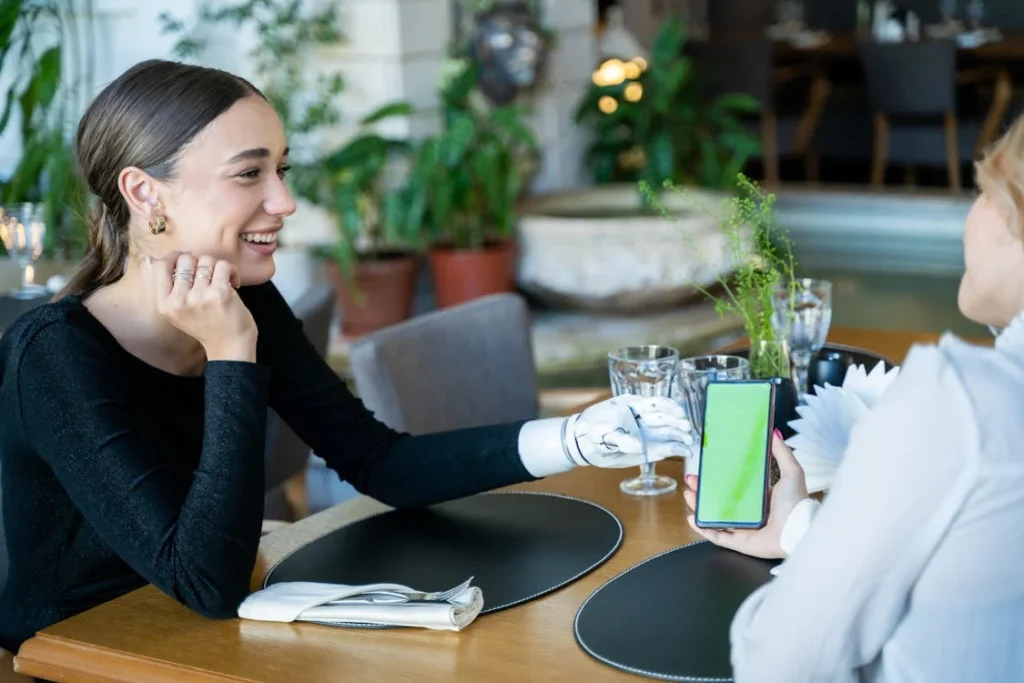
Using Motivation and Feedback Loops to Keep Patients Coming Back
Why Motivation Is Not a One-Time Design Element
One of the most important aspects of any rehab app isn’t the feature set—it’s whether the patient uses it regularly. A well-designed app with perfect functionality is meaningless if it collects dust after the second session. And the truth is, most users drop off after a few days if the experience doesn’t motivate them to return.
Motivation isn’t a feature you plug in. It’s a feeling you design around. And in rehab, motivation needs to be especially strong—because what you’re asking the user to do is difficult. You’re asking them to keep going through pain, through uncertainty, through doubt. You’re asking them to rebuild their relationship with their own body.
To do that, your design must create an emotional rhythm. It needs to acknowledge effort, show progress, and deliver reward in subtle, satisfying ways. This is where feedback loops play a central role.
Crafting Simple, Positive Feedback Loops
In design, a feedback loop is the cycle of action and response. The user does something, and the system reacts. When this is done well, the response is immediate, meaningful, and rewarding.
In a rehab app, this can look like a warm animation after completing a stretch. Or a progress ring gently filling up. Or a soothing sound when a posture is corrected. These are not gimmicks—they’re cues that tell the brain: “This action was good. Let’s do it again.”
The more consistent and positive these loops are, the more likely the patient is to repeat the behavior. This isn’t just psychology—it’s neuroscience. Feedback loops trigger dopamine, which enhances learning, emotional engagement, and long-term memory.
But here’s the key: don’t overdo it. Too much feedback becomes noise. Too much praise feels fake. A quiet “Great progress today” after a meaningful session is more powerful than a fireworks display after every movement. Respect the user’s intelligence and emotional state. Match the tone to the effort.
Tracking Progress in a Way That Feels Human
Showing progress is tricky. Numbers can be helpful—but also discouraging. Charts and graphs can offer clarity—but they can also feel cold, even judgmental. Great UX design presents progress as a story, not a spreadsheet.
Instead of listing reps or calories burned, show what matters: “You’ve completed 4 sessions this week—one more than last week.” Or “Your grip held 2 seconds longer today than yesterday.” These statements feel relatable. They highlight growth without implying perfection.
Visual storytelling helps too. A small plant that grows with each session. A path that fills in as users advance. A calendar that glows softly on completed days. These are emotional visuals—they make users feel like they’re moving forward, even when they can’t see physical change yet.
Progress should feel like it’s happening in the background. It shouldn’t demand constant checking. But when the user does check, it should feel reassuring. The story should say: “You’re on your way. Keep going.”
Creating Personal Goals Instead of Generic Targets
Traditional rehab often imposes goals: do 10 reps, hold for 30 seconds, attend three sessions per week. While these are medically necessary, they don’t always motivate users emotionally. They feel like tasks. And if missed, they can feel like failure.
Instead, a rehab app should allow users to set personal goals that align with their real lives. Not just “increase range of motion,” but “carry my own backpack again.” Not “improve balance,” but “stand while brushing my teeth.”
These goals can live inside the app quietly, as a reminder of what the user is truly working toward. When progress toward these goals is shown, even in small ways, it creates a deeper bond between the user and their recovery.
Apps can offer gentle prompts like, “Want to set a goal for the week?” or “What’s something you want to be able to do again?” These aren’t intrusive—they’re empowering. They allow the patient to own their journey, not just follow instructions.
When the user feels like the app remembers their personal “why,” they’re more likely to keep showing up—because the work starts to mean something beyond the app.
Handling Breaks Without Shame
Real users miss sessions. Life gets busy. The body hurts. Motivation dips. That’s normal. But many apps treat this like a failure—resetting streaks, showing red alerts, or using messages that feel scolding: “You missed yesterday’s session. Let’s get back on track.”
In a rehab setting, this is harmful. It builds guilt. It increases the emotional cost of returning. And sometimes, it makes users stop altogether—just to avoid feeling judged.
Great UX understands this. When a user misses a session, the app should welcome them back gently: “We’re glad you’re here. Let’s ease in today.” Or even better: “Missed a few days? That’s okay. Let’s just start where you are.”
This kind of design reduces fear. It breaks the cycle of shame. It keeps the emotional door open, so users feel safe returning, again and again. That’s how you build a habit that lasts beyond motivation—because it’s grounded in grace.
Giving the Right Nudge at the Right Time
Sometimes, users don’t need praise. They need a nudge. But a good nudge respects timing and tone. A poorly timed notification—pushed in the middle of work or when someone’s resting—can feel annoying or even invasive. A motivational quote sent after a bad pain day can feel hollow.
Nudges work best when they are predictable, gentle, and aligned with user behavior. A morning reminder at the same time each day. A quiet prompt when a user skips two sessions in a row. A soft encouragement when they’re halfway to a goal: “You’re making real progress.”
Allow users to set their own reminders, choose their own timing, or turn nudges off. Autonomy builds trust. And trust builds routine.
When reminders feel like a friend checking in—not a taskmaster giving orders—the user is more likely to respond positively. They begin to associate the app with support, not pressure.
At Robobionics, we design every interaction with one guiding belief: If the app feels good, the habit will follow. And the best way to make it feel good is to make motivation part of the design—not something we hope will just happen on its own.
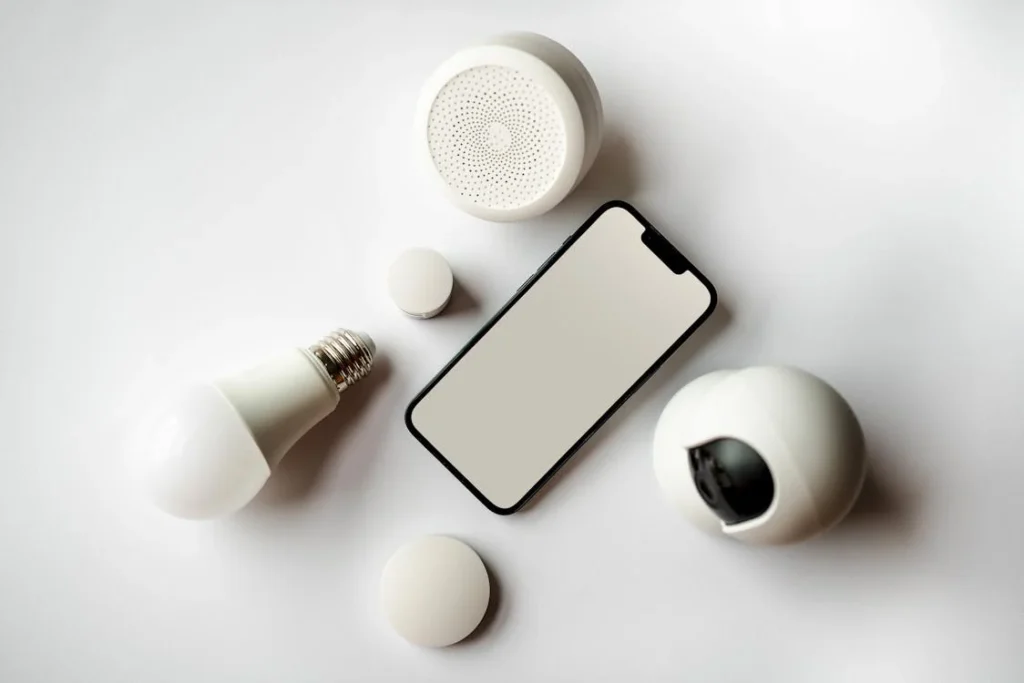
Integrating Therapist Support Without Making the App Feel Clinical
The Balance Between Digital Freedom and Human Connection
A rehab app often begins as a personal companion—a private space where users practice movements, track progress, and rebuild strength. But at some point, most patients benefit from human interaction too. Whether it’s a prosthetist, physiotherapist, or occupational therapist, these professionals guide the deeper decisions in a patient’s journey.
That means a truly effective rehab app must balance independence with connection. It should give the patient room to heal on their own, but also offer smart ways to involve their care team—without making the app feel cold, clinical, or overly medical.
It’s a delicate balance. The moment an app starts to feel like a hospital portal—with intimidating charts, harsh terminology, or impersonal appointment reminders—it breaks the emotional bond the user has built with it. The best rehab apps include therapist support quietly, supportively, and always on the user’s terms.
At Robobionics, we’ve seen firsthand that recovery is stronger when technology and humans work together—but only when the connection feels respectful and empowering.
Allowing the User to Share What They Want, When They Want
Patients aren’t always comfortable sharing everything. Maybe they had a bad session. Maybe they’re still adjusting emotionally. A great rehab app doesn’t demand transparency. It invites it.
For example, after a session, instead of automatically exporting all data to a therapist, the app might ask: “Would you like to share today’s progress with your therapist?” This puts control in the user’s hands. It avoids surprise. It builds trust.
In some cases, the app might allow certain thresholds to trigger prompts—like if a patient skips several sessions in a row. Even then, the message can remain gentle: “We noticed you’ve taken a break. Want to notify your therapist, or just pick up from where you left off?”
This level of consent-driven sharing is essential. It turns the rehab app from a tracker into an ally. One that respects the emotional landscape of healing.
Creating Spaces for Therapist Input That Feel Personal, Not Prescriptive
Therapist feedback is incredibly valuable. But if delivered through stiff, generic notes (“Patient not meeting range-of-motion target”) it can discourage the user or make them feel watched. Rehab apps should create therapist interactions that feel collaborative, not corrective.
This might look like a simple voice message: “Great form today! Let’s try adding 5 more seconds tomorrow.” Or a handwritten-style note on a progress screen: “So proud of your consistency. Keep it up.”
Even better: allow patients to reply. Let them say, “That last stretch was tough,” or “Can we reduce the reps next time?” When the patient feels heard, the app becomes a conversation—not just a dashboard.
These little exchanges, when integrated directly into the experience, make rehab feel personal again. They bridge the gap between digital progress and real human care.
Therapist Tools That Work Behind the Scenes Without Overloading the User
Sometimes, the best UX is invisible. A therapist might need to monitor progress, adjust session intensity, or update routines based on patient feedback. But the user doesn’t need to see every tweak or setting.
The app can offer a therapist portal on the backend—where care providers view trends, movement accuracy, skipped sessions, or pain feedback. They can quietly adjust the plan for the next session. To the user, it simply feels like the app is evolving with them.
This hands-off guidance gives the patient freedom, while still keeping care grounded in expert oversight. The app doesn’t become a medical tool—it stays a healing companion, enhanced by wisdom behind the curtain.
If a change is significant, the app can say, “Your therapist adjusted today’s session to fit your energy level. Ready to begin?” It’s subtle, soft, and built on mutual respect.
Live Support Options That Don’t Interrupt Flow
Some users might want to connect in real time—with a therapist, coach, or support staff. But this can be overwhelming if done wrong. Pop-up chats or unexpected calls disrupt focus and add pressure.
Instead, the app can include a “Connect” tab—where users can request a callback, send a voice note, or book a session when they feel ready. No urgent tones. No blinking alerts. Just calm, predictable access to help when needed.
This model respects emotional readiness. Some users are shy. Others are unsure. A live support feature that waits until they’re ready to speak is far more empowering than one that constantly reaches out.
Even asynchronous options—like leaving a question for a therapist—can go a long way. The point isn’t real-time speed. It’s emotional safety.
Letting Therapists Personalize the App Without Breaking the UX
Care providers may want to tailor the experience—change the order of exercises, add a new routine, or set a reminder. But if that customization messes up the app’s flow, the UX breaks.
The solution? Design a therapist interface that talks to the app, not through it. The provider can set parameters in the background. The app then updates in a way that feels seamless to the user.
For example, if the therapist adds a new stretch, the app might say: “You’ve unlocked a new stretch for this week—want to try it?” This keeps the patient engaged without making it feel like someone’s taken over their journey.
The best therapist-patient UX feels like two hands on the same steering wheel—each offering guidance, but never fighting for control.
The Power of Feeling Seen—Even Digitally
When a patient sees a message from their therapist inside their app—or feels like their progress is being noticed—it lights up more than just motivation. It lights up identity. It reminds the user: “You are not alone in this.”
That small shift—from isolation to connection—is what turns a rehab app from a tool into a lifeline.
This is especially true for kids, teens, and elderly users who may feel isolated during recovery. A kind word, a thoughtful comment, or a celebratory message from a therapist creates an emotional anchor. It turns the app into a shared space, not just a screen.
At Robobionics, we believe that a great rehab app doesn’t replace human care. It strengthens it. It creates moments where technology and compassion meet—quietly, intentionally, and always in service of the person using it.
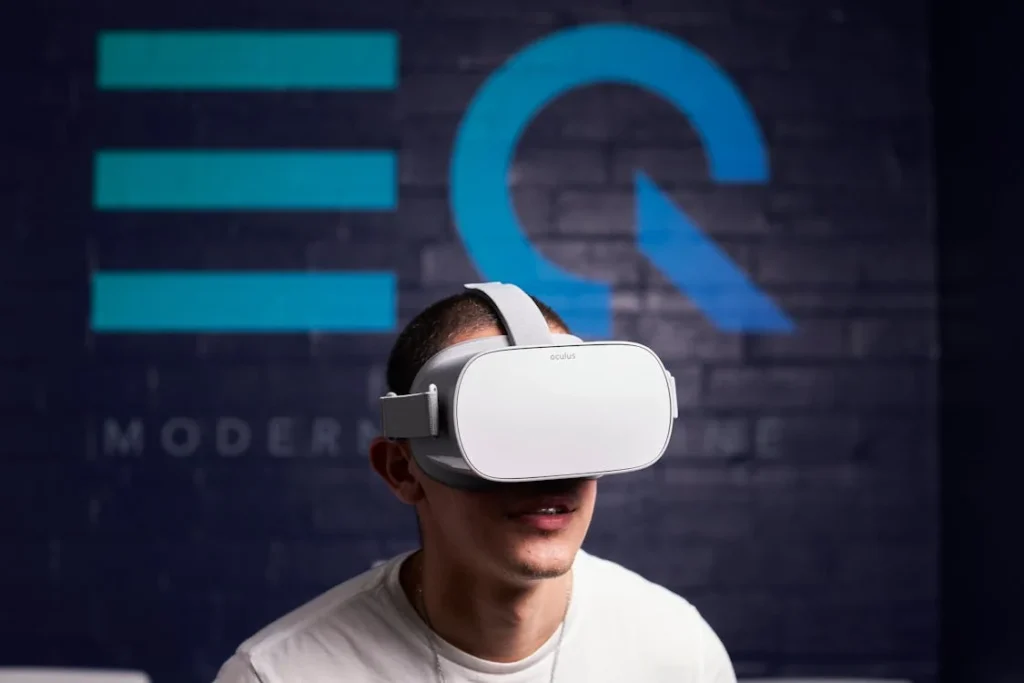
Merging Digital and Physical Worlds: The UX Power of Real-World Integration
Why Real-World Feedback Makes Digital Design More Meaningful
Rehabilitation doesn’t just happen on a screen. It happens in real life—in bedrooms, kitchens, clinics, sidewalks, and playgrounds. When rehab apps are designed as isolated experiences, they risk feeling artificial or disconnected from what the user actually needs day-to-day. But when digital design reflects real-world movement, something extraordinary happens: rehab becomes natural.
That’s why motion-based input, smart sensors, and device syncing are no longer just “tech extras.” When used well, they become part of the core UX strategy.
For patients using prosthetics—especially bionic or myoelectric limbs—every movement is a lesson. Every motion is feedback. And if a rehab app can see that movement, respond to it, and guide the user in real-time, it becomes a much more effective and personalized coach.
UX design isn’t just about making buttons big and screens clean. It’s about making the app respond as fast and clearly as the human body needs it to. That’s where sensor integration becomes so valuable—not just as a feature, but as a bridge between effort and progress.
Using Motion Sensors to Make Feedback More Honest and Useful
When a patient opens an app and is asked to perform a task, they’re being asked to trust that the app is guiding them correctly. But if the app can’t actually see what they’re doing, that trust is a bit fragile.
With smart UX design, motion sensors embedded in prosthetics—or wearable devices like bands or smartwatches—can change this. The app can now see if the user has moved enough, if they completed the motion properly, or if they’ve compensated with the wrong limb. And most importantly, the app can respond instantly.
This kind of feedback—fast, clear, and based on actual motion—helps the brain adjust in real time. The user isn’t left wondering “Did I do that right?” They know. The app tells them gently. Maybe with a chime, a color shift, or a slight vibration.
These little cues transform UX from guesswork to guidance. They help users feel in control and more connected to their bodies, especially after traumatic changes like limb loss.
The more accurate the app is at reading and reacting to the user’s movement, the more confident that user becomes. Confidence, in recovery, is half the battle.
Real-World Task Simulations Inside the App
Another area where rehab UX can evolve is by mimicking everyday tasks—not just abstract movements.
Instead of generic stretching or strength-building routines, the app can introduce tasks that simulate real-life needs: gripping a cup, climbing stairs, opening a door. And if the app is connected to motion sensors or prosthetic feedback, it can monitor how these movements are performed in real time.
Imagine a user with a new robotic hand practicing grip strength. The app might guide them through a virtual cooking task—grabbing, stirring, releasing. As they move their prosthetic, the app reacts, offering visual rewards and corrections based on how naturally and confidently the grip is held.
This kind of task-based design makes therapy feel practical. The user sees how the training applies to their actual life. It builds mental models that stick—and accelerates learning by linking abstract movement to specific goals.
For prosthetic users, this real-world simulation can also reduce fear. Many hesitate to use their new limb in public. But if they’ve already practiced a similar motion in a safe digital space, they’re more likely to try it in real life.
That’s what great UX should do: prepare users for the world, not just keep them in the app.
Environmental Context as a UX Layer
Rehab is affected by where the user is. Are they at home, in a clinic, outdoors? Are they standing or seated? Is their body warm, tired, or rested?
Using device sensors like accelerometers, GPS, or time-based triggers, rehab apps can offer smarter, more context-aware experiences.
For example, if the app notices the user hasn’t moved much today (based on sensor data), it might gently prompt: “Want a short standing session to loosen up?” If it’s evening, it might offer a slower, calm routine. If it notices the user tends to do therapy better in the morning, it might suggest an earlier session tomorrow.
This ambient awareness builds an experience that feels alive. The app starts to feel like it understands the user’s rhythms—not just their stats. That understanding leads to better habits, deeper trust, and improved long-term results.
It also makes the app feel less robotic. Less like a to-do list, and more like a smart companion that adapts to life as it’s happening.
Letting Physical Movement Drive the Interface
Traditional UX relies on taps, swipes, and buttons. But what if movement itself could control parts of the app?
A user could nod or raise an arm to start a routine. Flexing a wrist could move to the next screen. For prosthetic users, the device could recognize intentional gestures and respond with confirmation tones or haptic pulses.
These gesture-based controls not only add novelty—they also give users more natural ways to interact, especially if they’re unable to tap with ease.
Imagine a child recovering from limb surgery lifting their arm and watching the interface react, move, or cheer them on—just from that motion. Suddenly, the screen feels less like a barrier and more like a mirror of their effort.
This is where UX starts feeling magical—when the line between body and screen blurs.
Conclusion
A rehab app is more than just a tool—it’s a daily companion in someone’s healing journey. It must feel simple, comforting, and human. Every tap, motion, message, and sound should support the patient not only physically, but emotionally. Great UX doesn’t just help people do their exercises—it makes them want to show up, try again, and keep going.
From soft onboarding and mood-based adjustments to real-world integration and sensor-driven feedback, every design decision shapes how the user feels. The best apps don’t demand perfection—they adapt with empathy. They make progress visible, failure safe, and success feel personal.
At Robobionics, we believe that recovery is not just about movement—it’s about motivation, mindset, and trust. And with thoughtful UX design, a rehab app can do more than support healing. It can inspire it. When care and design come together, recovery becomes a story the patient is proud to own—step by step, session by session, screen by screen.



